HTC One max Review - It's Huge
by Brian Klug on October 28, 2013 10:00 AM EST- Posted in
- Smartphones
- HTC
- Mobile
- One
- Snapdragon 600
- Android 4.3
- One max
The performance section is probably a good place to talk about one of the elephants in the room, and that’s the SoC inside the One max. The One max includes a Snapdragon 600 APQ8064T SoC, which consists of 4 Krait 300 cores running at up to 1.7 GHz, and Adreno 320 GPU, all built on TSMC’s 28nm LP process. This is the same SoC that shipped in the original HTC One, and the same 1.7 GHz bin as well. There have been three major variants or families of APQ8064(T) to date. There first was the option for the earliest 1.5 GHz Snapdragon S4 Pro version (AA suffix), the 1.7 GHz “8064T/Pro” variant in the HTC One and One max (AB suffix) which began the Snapdragon 600 branding, and finally the 1.9 GHz CPU and 450 MHz GPU variant we first saw in the SGS4 (AC suffix). Qualcomm usually has a number of revisions of its silicon, and with APQ8064 we saw quite a few. As an aside, expect similar with 8974 or Snapdragon 800.
There’s nothing wrong with the 1.7 GHz Snapdragon 600 variant, it was and still is a great performer, but the reality is that HTC falls behind on its hardware platform with the One max by not going to Snapdragon 800 (MSM8974) like the rest of the competition (Note 3, ASUS Padfone Infinity 2014, LG G2, Nexus 5, and so on). So much of the SoC performance and power story right now is gated by process, and 8974 moves to TSMC’s high-k metal gate 28nm HPM process which affords some clock headroom (up to 2.3 GHz) and lower power consumption at lower performance states for Krait 400 (which is essentially 300 implemented on that new process). 8974 also brings a beefier Adreno 330 GPU with more ALUs and higher clocks, in addition to the new modem IP block, but I won’t go over all of that.
It’s pretty obvious to me that the One max stays with the same SoC used in the original One for a few reasons which ultimately boil down to cost and margin. It obviously means HTC can share the same SoC between the One and One max, and since it’s later in APQ8064’s lifespan I would suspect HTC was able to secure good pricing for it. Having closer shared hardware platform means about the same software stack on top of it, and the same source tree from Qualcomm (BSP) for building and testing ROMs. This makes the software maintenance and update costs lower for the One max. I won’t speculate too much beyond that, but I wouldn’t be surprised if the One max started out an 8974 device but later became an 8064 device, given its timing.
| I Can't Believe I Have to Regularly Update This Table | |||||||||||
| Device | SoC | Cheats In | |||||||||
| 3DM | AnTuTu | AndEBench | Basemark X | Geekbench 3 | GFXB 2.7 | Vellamo | |||||
| ASUS Padfone Infinity | Qualcomm Snapdragon 800 | N | Y | N | N | N | N | Y | |||
| HTC One | Qualcomm Snapdragon 600 | Y | Y | N | N | N | Y | Y | |||
| HTC One mini | Qualcomm Snapdragon 400 | Y | Y | N | N | N | Y | Y | |||
| HTC One max | Qualcomm Snapdragon 600 | Y | Y | N | N | N | Y | Y | |||
| LG G2 | Qualcomm Snapdragon 800 | N | Y | N | N | N | N | Y | |||
| Moto RAZR i | Intel Atom Z2460 | N | N | N | N | N | N | N | |||
| Moto X | Qualcomm Snapdragon S4 Pro | N | N | N | N | N | N | N | |||
| Nexus 4 | Qualcomm APQ8064 | N | N | N | N | N | N | N | |||
| Nexus 7 | Qualcomm Snapdragon 600 | N | N | N | N | N | N | N | |||
| Samsung Galaxy S 4 | Qualcomm Snapdragon 600 | N | Y | Y | N | N | N | Y | |||
| Samsung Galaxy Note 3 | Qualcomm Snapdragon 800 | Y | Y | Y | Y | Y | N | Y | |||
| Samsung Galaxy Tab 3 10.1 | Intel Atom Z2560 | N | Y | Y | N | N | N | N | |||
| Samsung Galaxy Note 10.1 (2014 Edition) | Samsung Exynos 5420 | Y(1.4) | Y(1.4) | Y(1.4) | Y(1.4) | Y(1.4) | N | Y(1.9) | |||
| NVIDIA Shield | Tegra 4 | N | N | N | N | N | N | N | |||
The HTC One max, like a ton of other devices, continues to employ a CPU optimization “boost” feature which plugs in all the CPU cores and increases clocks to their maximum upon detection of certain benchmarks. It’s sad that this needs to be a regular disclosure for each handset release, since the narrative will likely be the same for the near future, but yes the One max does this.
Given product development cycles and how long it takes software in the Android landscape to make it through the chain from internal OEM testing to operator test approval and finally hitting devices, I expect we’ll see a pipeline of devices with this “feature” enabled for a while before it changes, even if we could change every OEM’s mind about it right now. I’m starting to understand more about the origin of these optimizations, the list of APKs they detect and boost for, and what party is ultimately responsible, but that’s a story for another day.
CPU
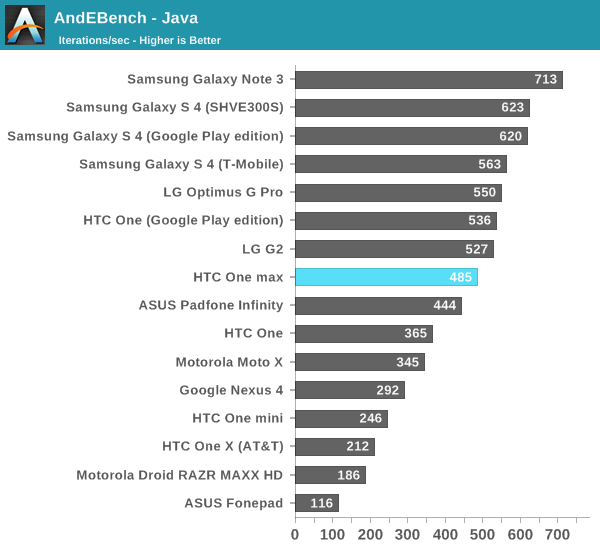
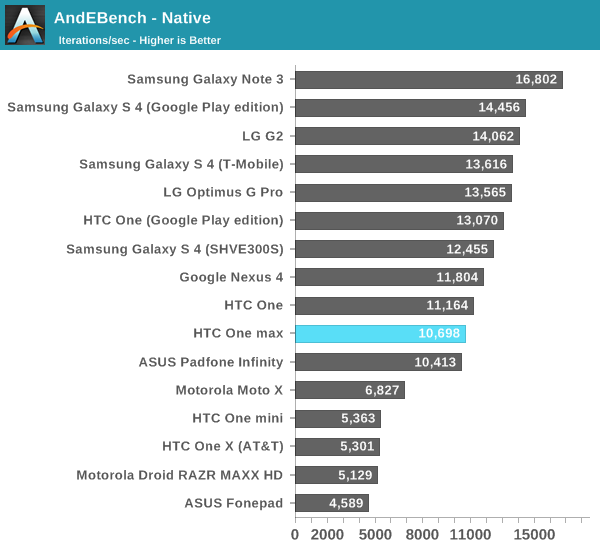
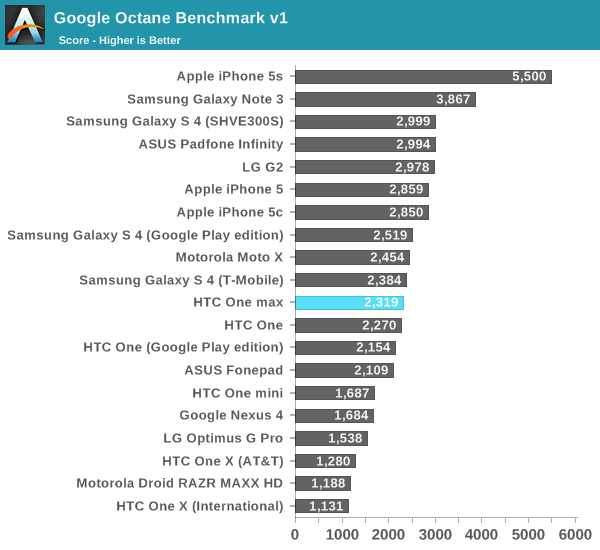
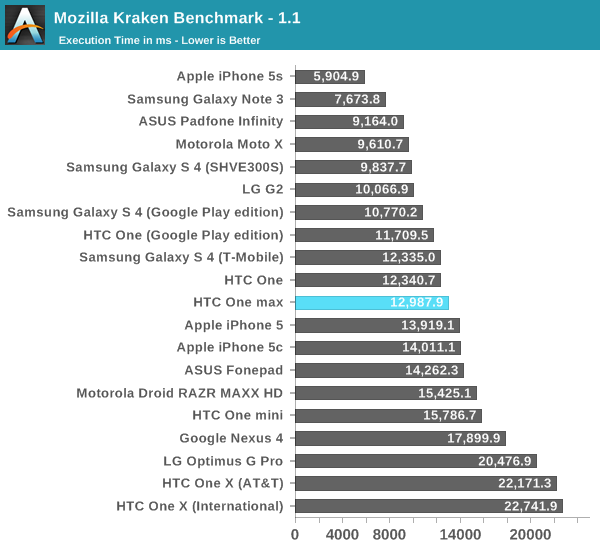
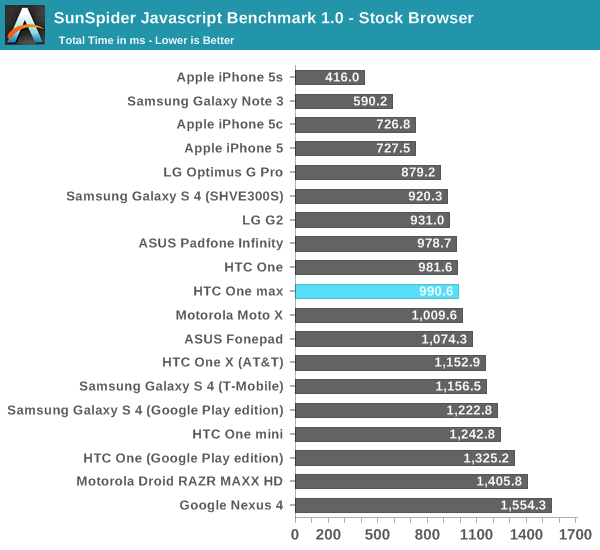
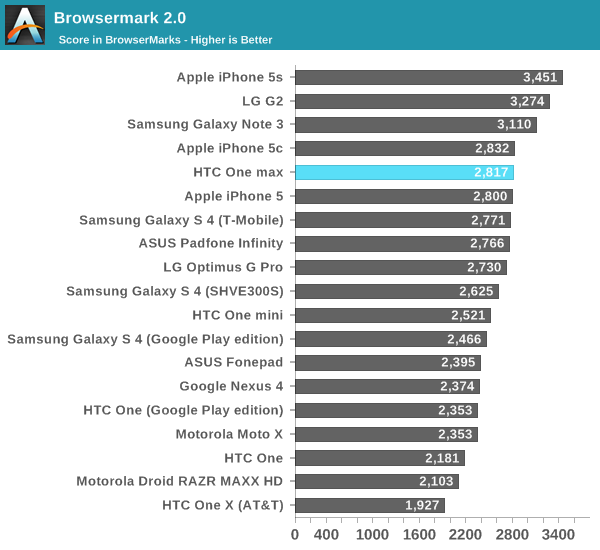
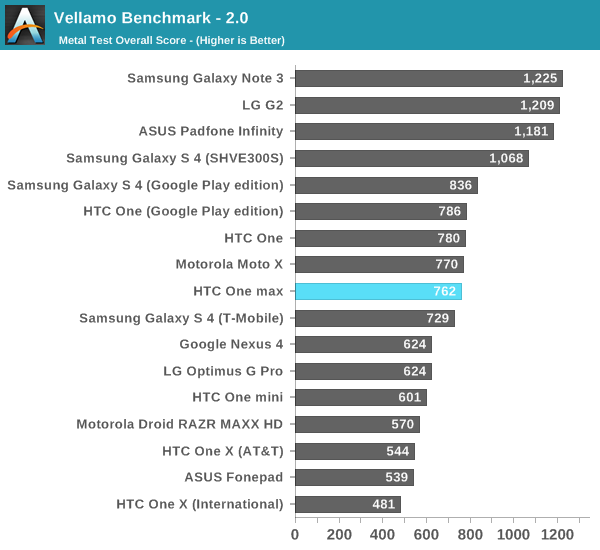
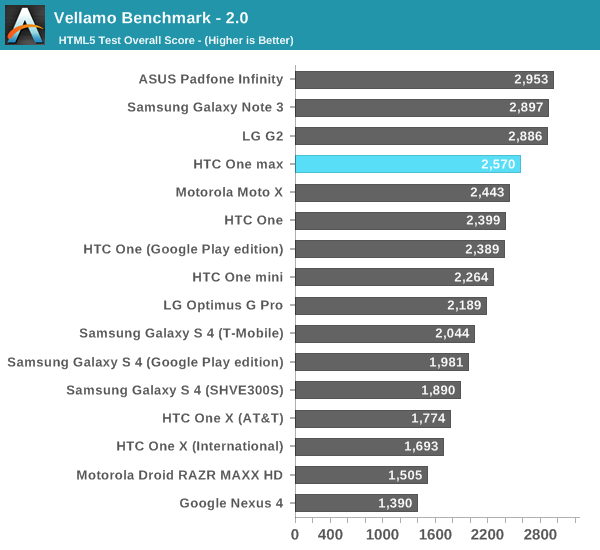
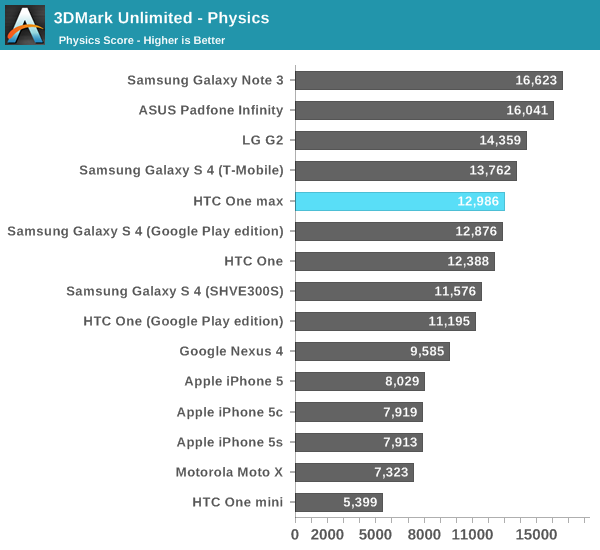
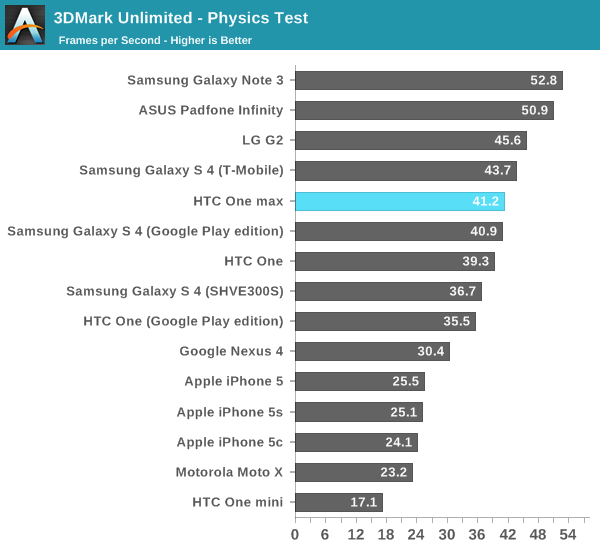
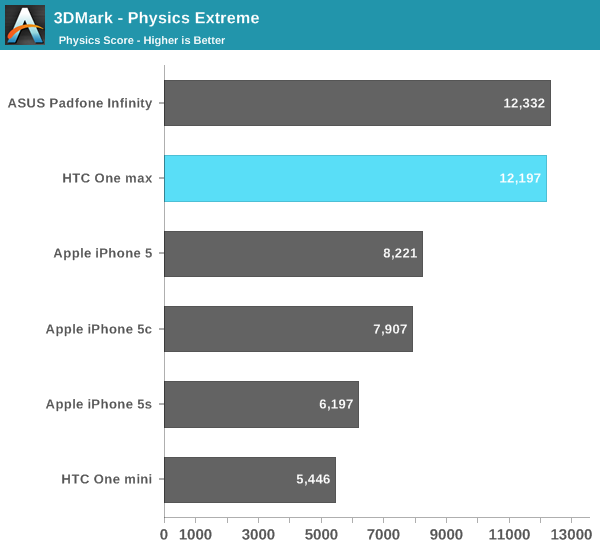
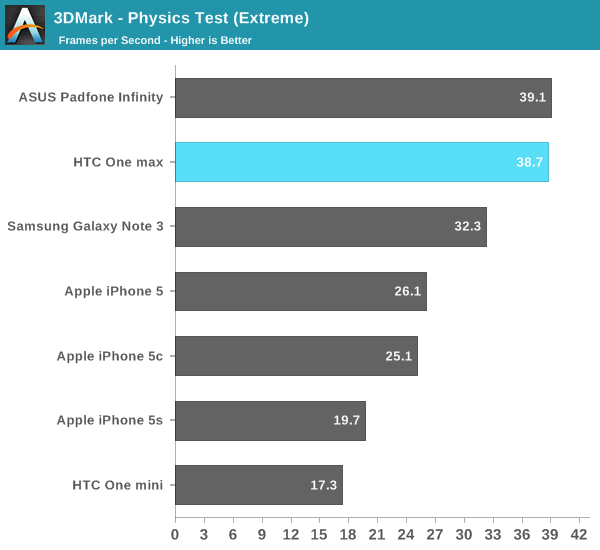
GPU
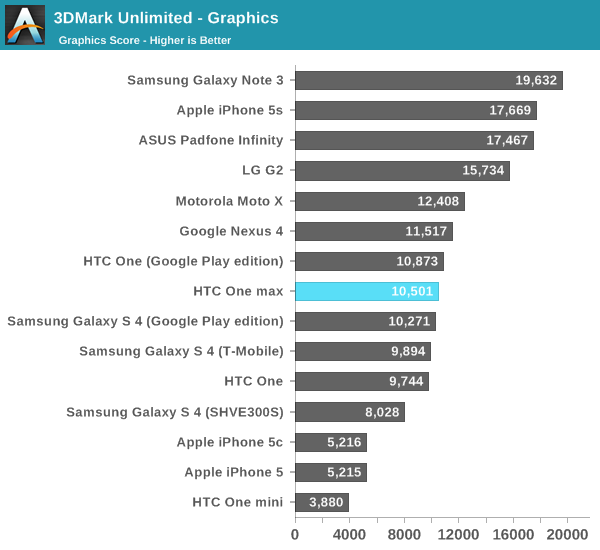
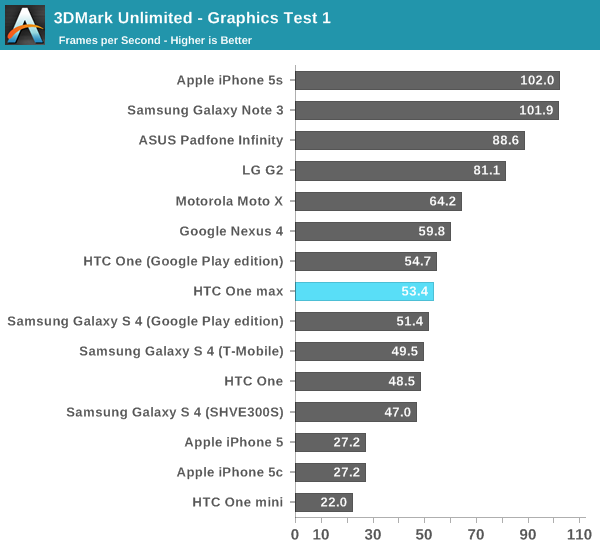
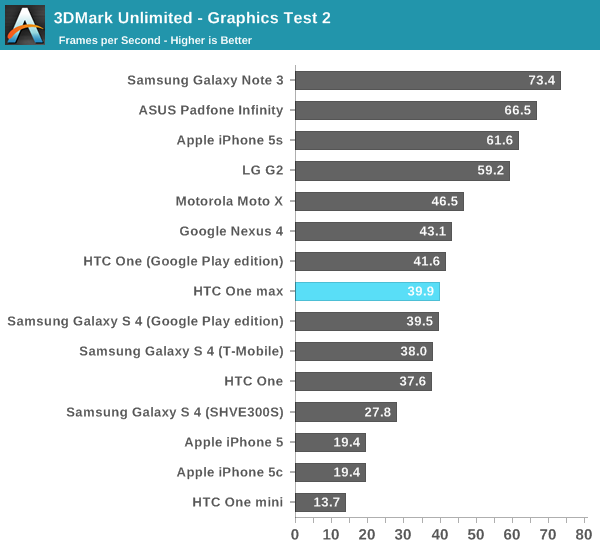
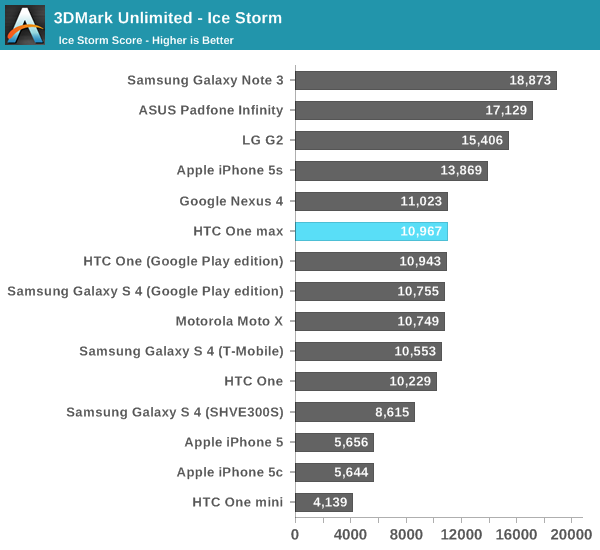
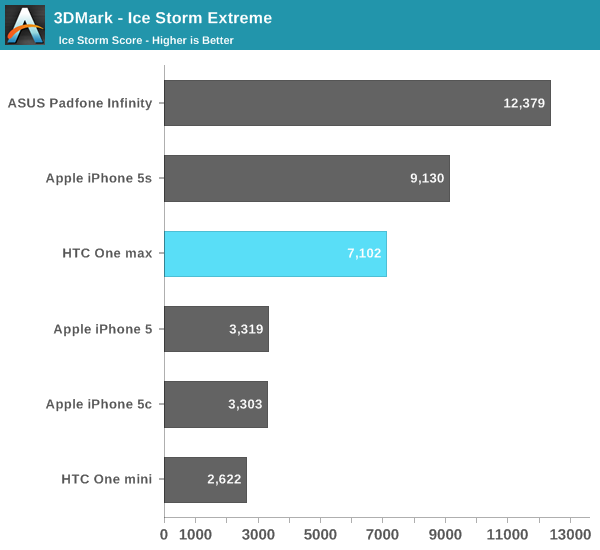
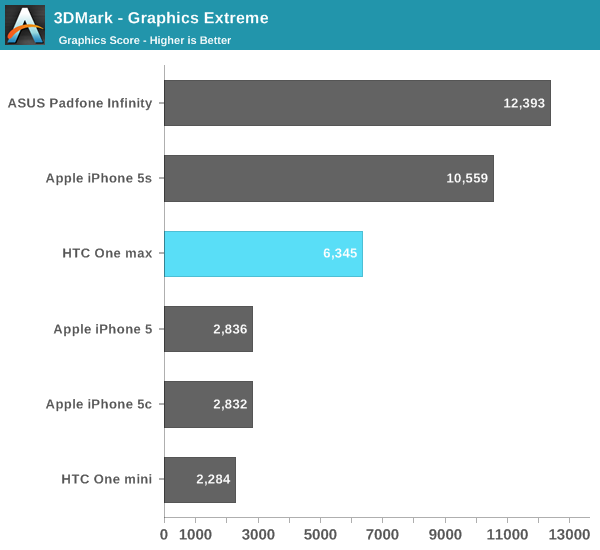
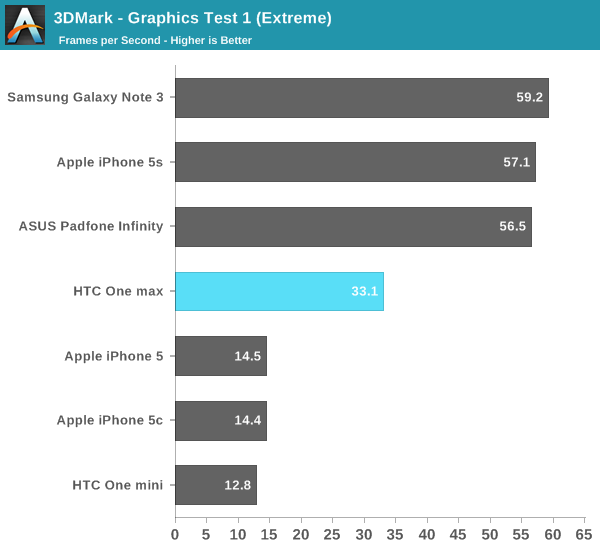
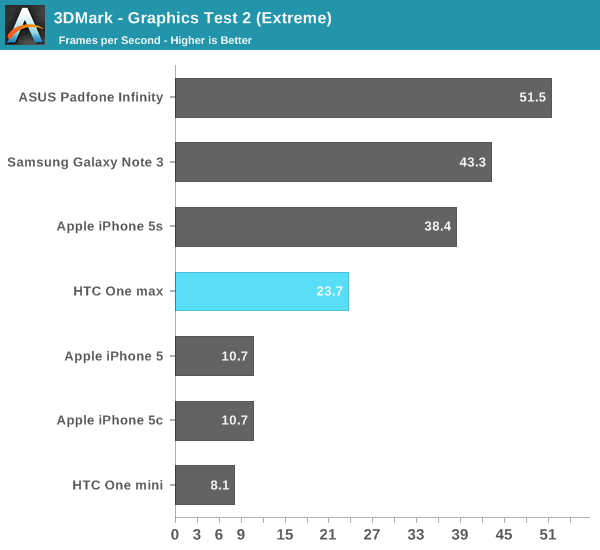
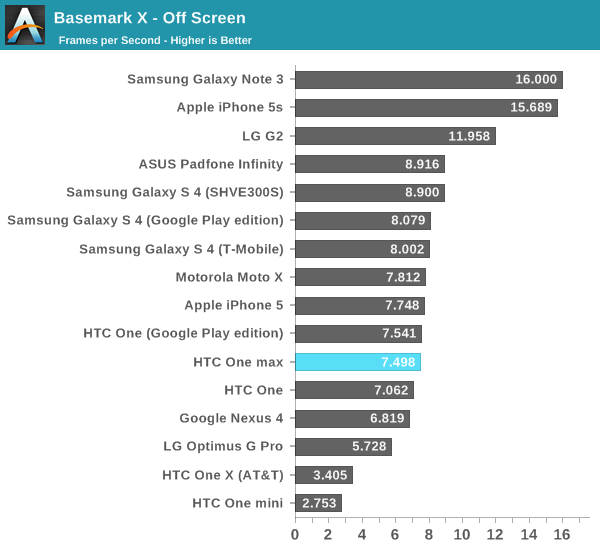
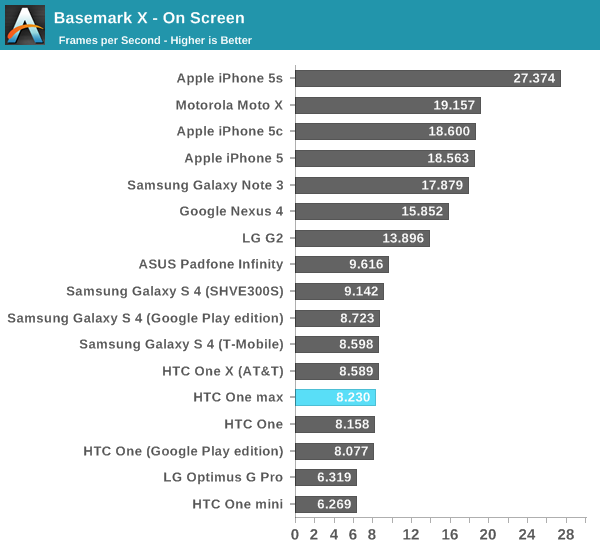
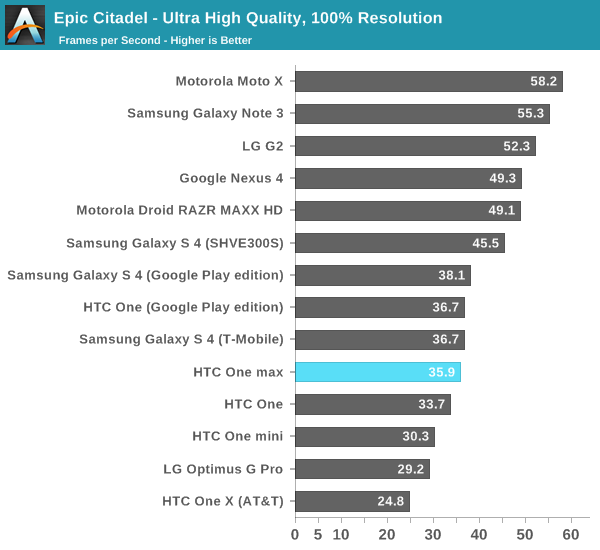
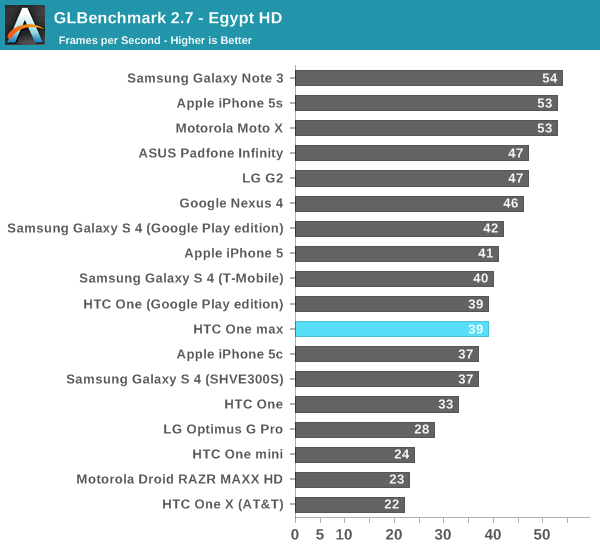
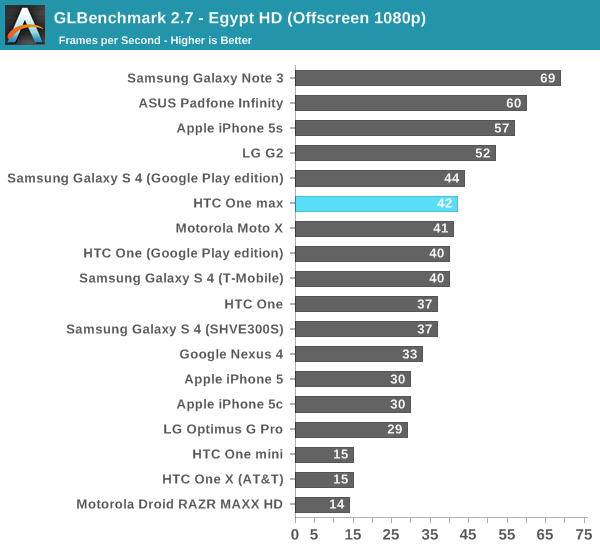
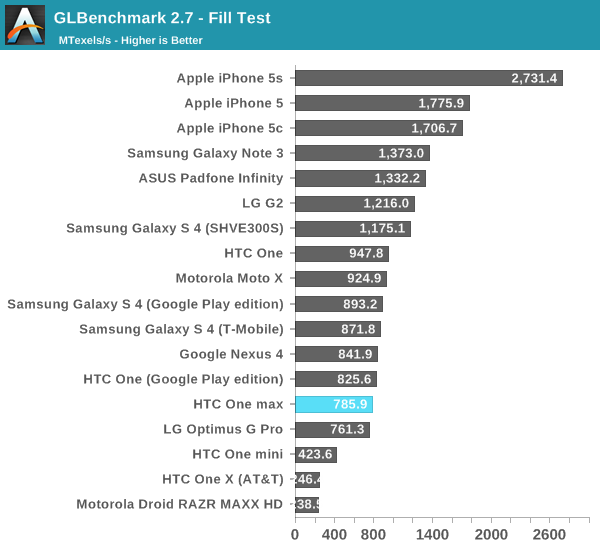

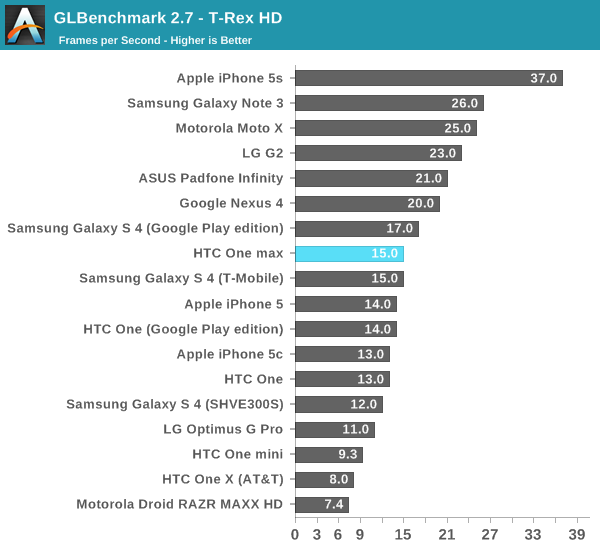
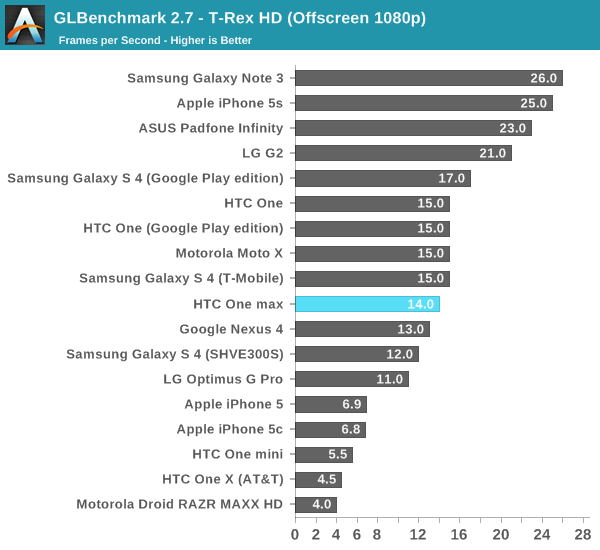
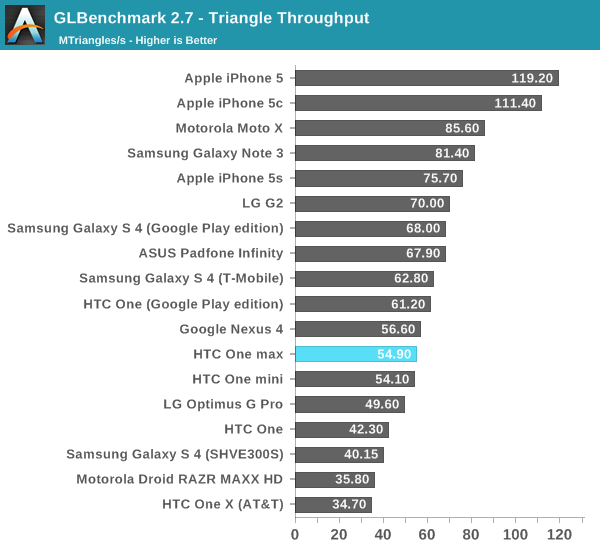
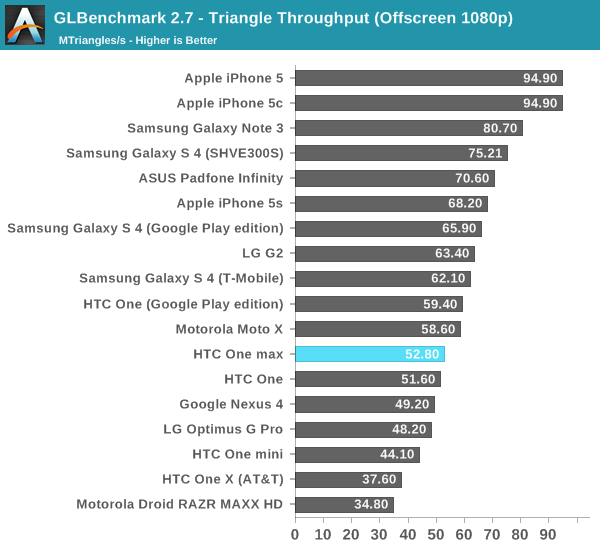
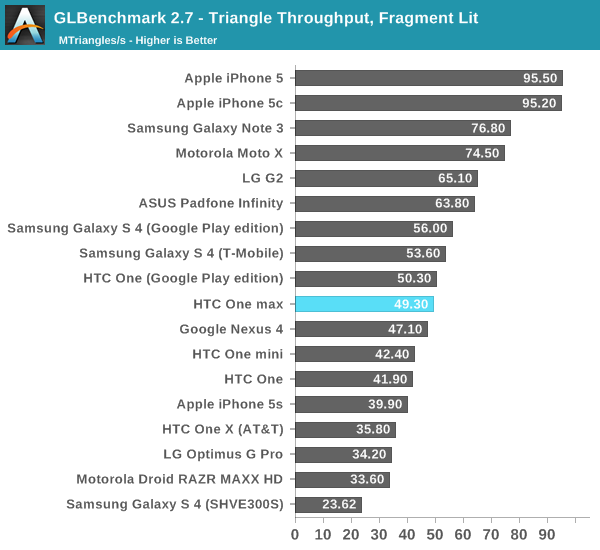
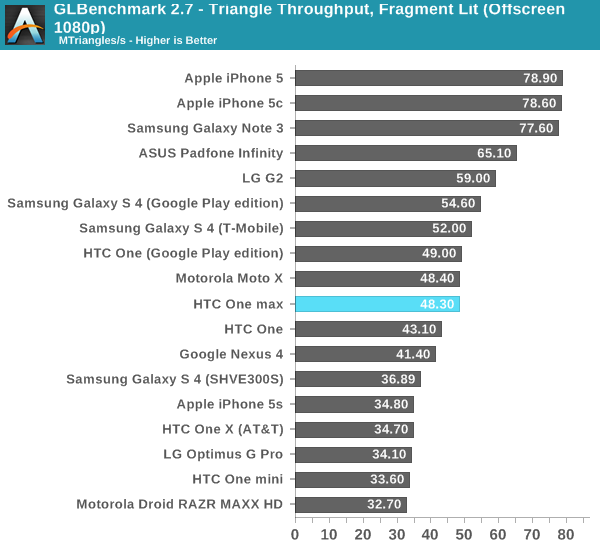
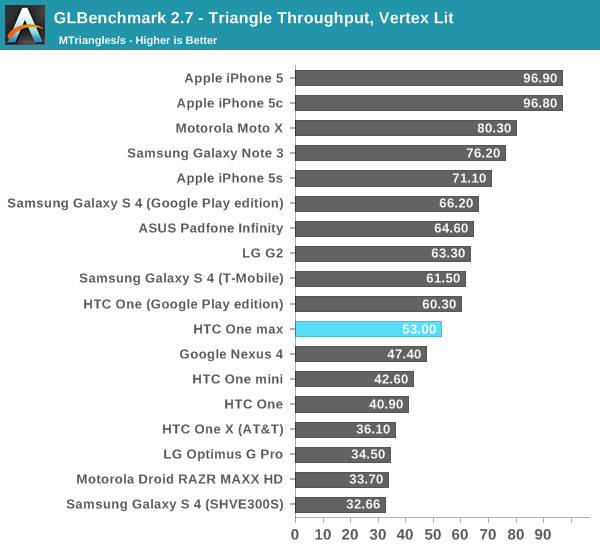
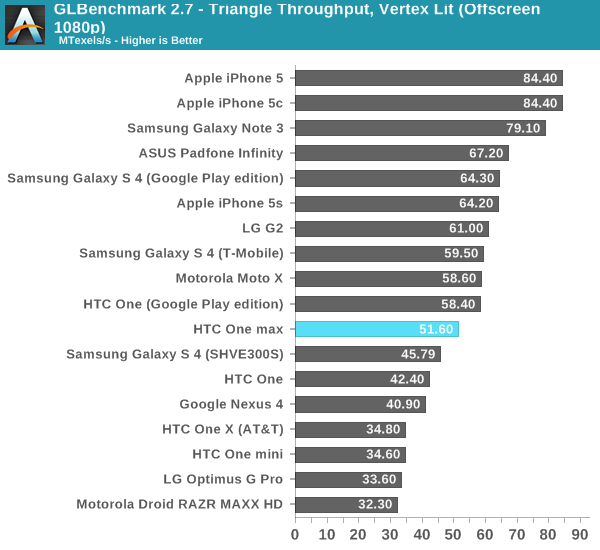
Storage
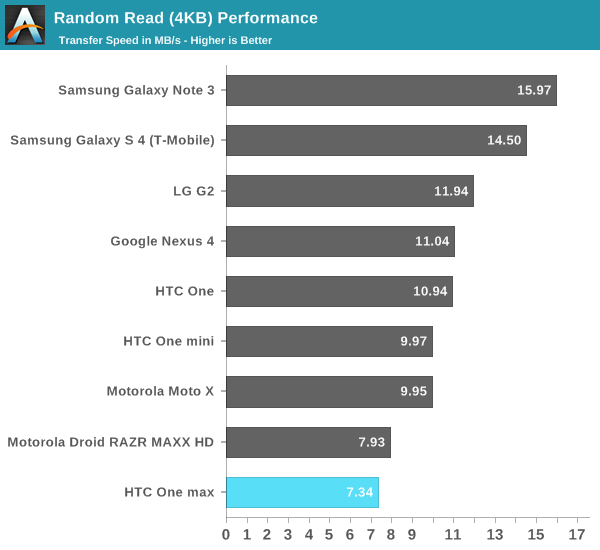
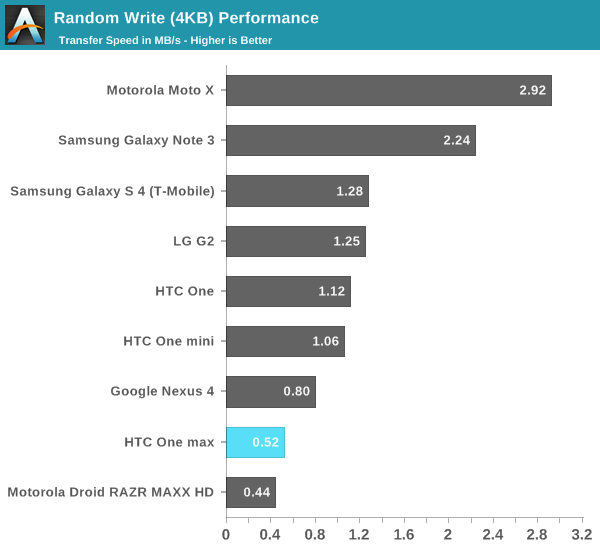
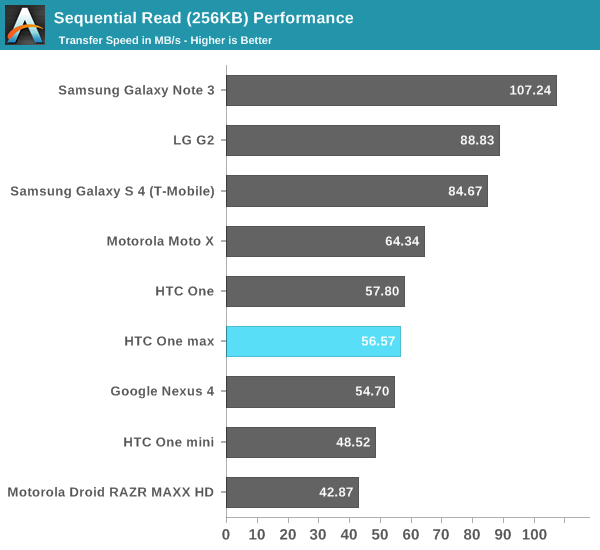
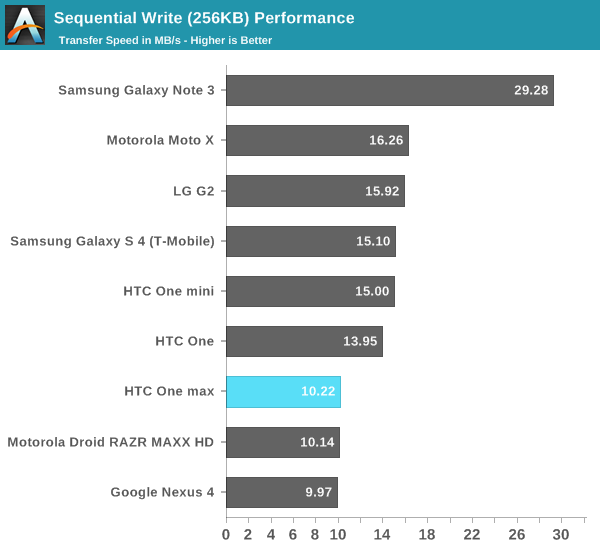
I’m not going to go through all the benchmark results on the One max since again it’s the 1.7 GHz Snapdragon 600 SoC we’re very familiar with at this point. The only oddity is storage performance, where the One max trails in random writes and reads, I'd attribute this to a different eMMC being used. The rest of the results are essentially within the margin of error. I initially suspected that the One max might have a bit more thermal headroom than the One, but this doesn't really seem to play itself out in the results, possibly due to the removable back door.


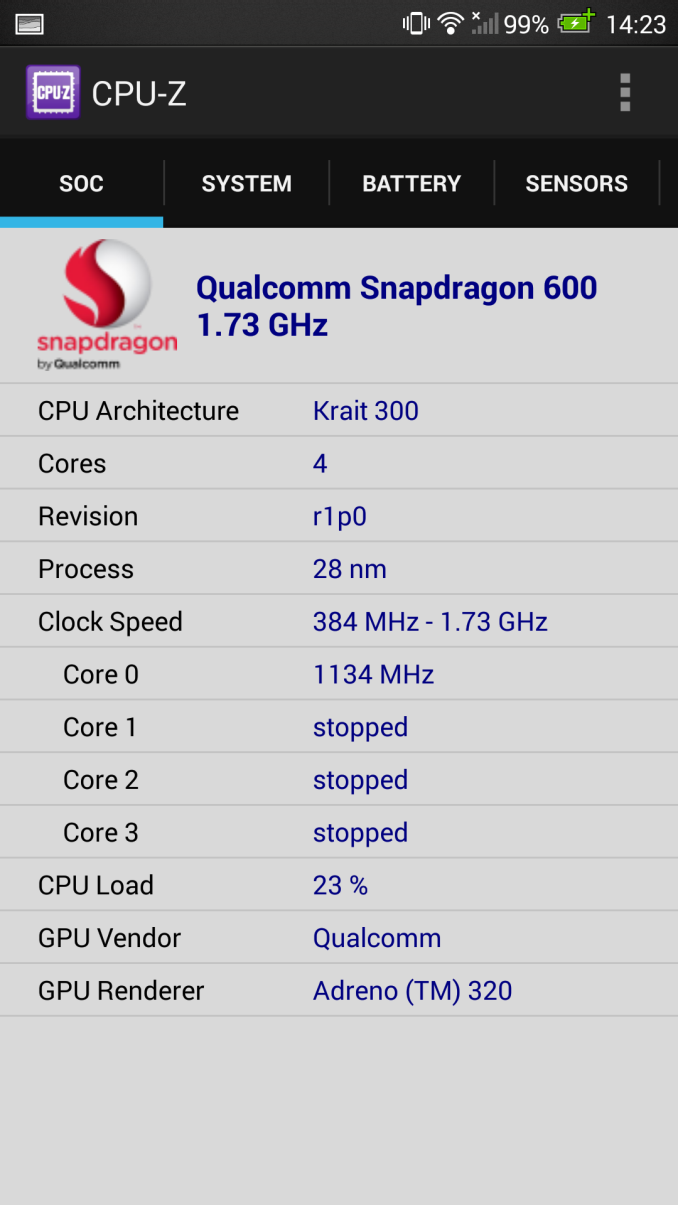
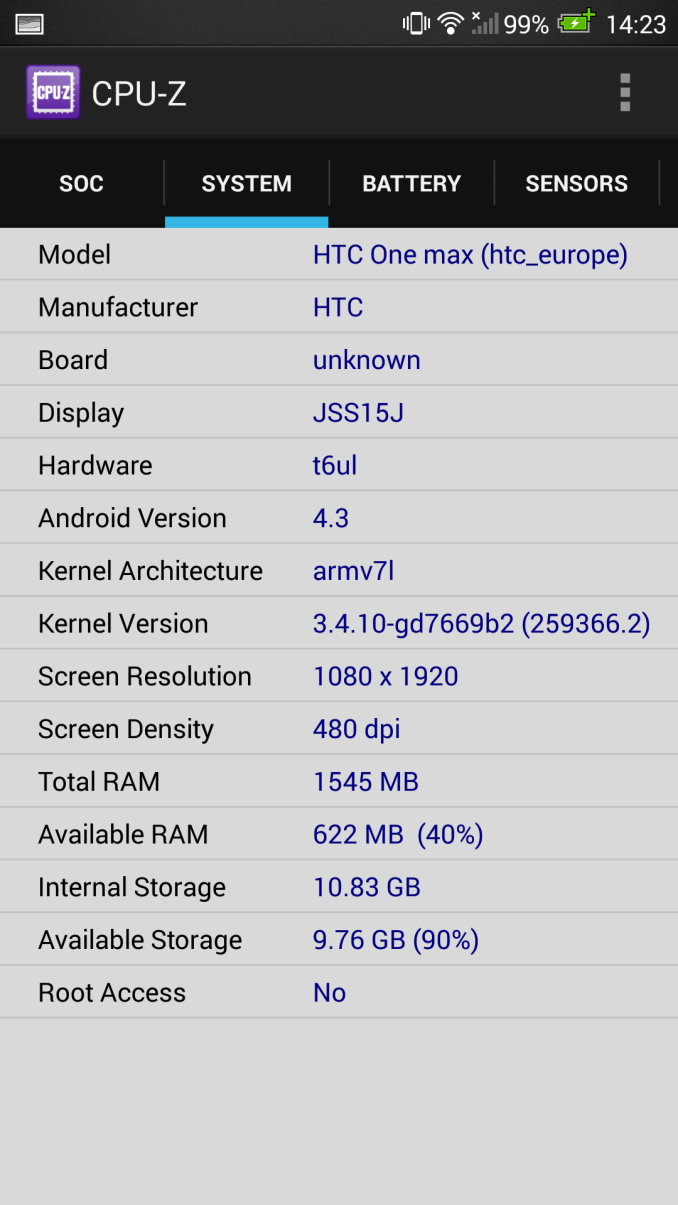








197 Comments
View All Comments
chizow - Tuesday, October 29, 2013 - link
Couldn't have written it better myself, I'll be honest and say I haven't read through an entire one of Brian Klug's reviews but if they were all filled with this kind of distorted reality transposed to the general populous, I probably wasn't missing much.Simply put, microSD opens up uses that base model 16GB phone users could never dream of using for their phones. For example, I recently had 2 large family events during the same weekend, took multiple movies at full 1080p on my SGS4 with a UHS-I microSD and captured around 25GB of footage. Never could I have done this with my 16GB Apple 4S, nor would I even attempted to do it.
And what would the other option be? Pay 2x as much for 16GB more? No thanks, not when I can just move my microSD card from one phone to the next and not get fleeced on extra storage every time I buy a new device, with my own money (seems to be a key point lost upon Brian, anyways).
seapeople - Tuesday, November 5, 2013 - link
So let's see... I'm a budget conscious consumer who is shopping for a smartphone that I'm going to keep for 4 years because I'm too cheap to upgrade sooner. My options are 16GB phone + microSD card for a total four year price of $3600, or a 64GB phone with faster native storage for a total four year price of $3760.Can't you see why it's absolutely ridiculous how you microSD shills freak out over such a pointless little feature? Just buy the overpriced flash storage and forget about it, it's barely a bump in the road for someone who's paying for a smart phone data plan anyway.
Spunjji - Thursday, November 28, 2013 - link
Nice work, that straw man was totally asking for it and boy did you give it to him. You're such a big man.tipoo - Monday, October 28, 2013 - link
I do like the cheating table of shame there, but I also worry that this would just make the cheating more sophisticated, with phones being able to detect apps even with renames and hide their clock speeds etc.FalcomPSX - Monday, October 28, 2013 - link
just how big are phones going to get before people realize how absolute ridiculous it looks holding a tablet sized device up to your ear? Something the size of the original htc one is just about right.AssBall - Monday, October 28, 2013 - link
Its more ridiculous watching someone hold a tiny phone 8 inches from their face so they can see what it says and push the tiny buttons. I'll take a larger phone any day. Easier to use, harder to lose, good battery, nice screen size.MikePCUser - Monday, October 28, 2013 - link
Comparison videos between the One Max and the One on YouTube also show the MICROPHONE is decidedly inferior on the One Max. I wish you had tested that as well!chizow - Monday, October 28, 2013 - link
Brian, while you are certainly entitled to your opinion of every aspect of the smartphone market, I think you need to take a step back and realize not everyone is in your situation and receives free phones for review or a product budget for AT to buy review samples.I think your comments with regard to SD cards in particular are off target, as it is an important feature for many users who do not want to pay exorbitant amounts for miniscule increments of storage. 128GB models if some popular phones like the iPhone 5S literally double the on-contract price vs a 64GB SD card that sells for 50 bucks.
Contrary to what you have said, the fact the One Max's inclusion of an SD slot along with myriad other Android and Windows tabs and phones illustrates SD slots are NOT going the way of the dodo. Hopefully companies do not take your opinions on the matter as fact.
Brian Klug - Monday, October 28, 2013 - link
Please read my above comments about SD cards, the reality is that the demographic that uses them is a lot smaller than you'd think.Also there's no 128 GB iPhone 5S, just 64 GB.
The context everyone is missing is that I would not trade an SD card slot for the removable door and build quality tradeoffs it brings.
-Brian
10101010 - Monday, October 28, 2013 - link
What you present regarding SD cards and build quality tradeoffs is largely a false dichotomy based on your own biases regarding particular aspects of "build quality".Take for example, the Sony Xperia Z Ultra. It's about the same size as the One Max and offers SD card expansion. Many reviewers have positively commented on the build quality of this device, even noted that it offers water and dust resistance. A more insightful reviewer would realize that it isn't the SD card that is responsible the particular issues you have with build quality, it is the fact that the phone wasn't designed well to begin with.
Of course, you would probably still disparage all the purchasers of this device for wanting flexible affordable local storage and find some way to disparage the device for poor build quality anyway. After all, biasing people away from flexible and cheap local storage and towards expensive and easily data-mined in-cloud storage is what your corporate masters want, isn't it?
If we look at your shallow view of "build quality", then it becomes even more obvious that there is a false dichotomy. You don't spend much time balancing how easy it is to repair a device vs. how it is built. You don't balance the fact that many phones with removable back covers have replaceable batteries. Nor do you balance the additional radiation going into someone's head because a phone is made of metal. Essentially, you are looking at a few aspects of something that resonate with your biases and proclaiming some judgment that SD cards are bad for phones and that the people who want SD cards are some sort of small, unimportant, and obnoxious minority.
Even if you continue to push your biases in your "reviews", maybe it's time for a bit more honesty? You can still write a good review if you say "I just don't like SD cards because it's hard for me to manage removable local storage".